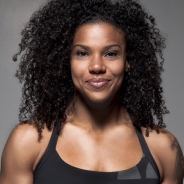Ever since the CrossFit Games Masters Division was born in 2010, fans have wondered what it would look like by the time the stars of the individual competition got there. This week we’ll find out, as individuals with Games experience reaching back as far as 2007 take the field in the inaugural Masters 35-39 Division.
“I wasn’t surprised,” said seven-time individual Games veteran Chris Spealler, who makes his first masters appearance in the new division this year. “I think it was a good addition, and (will) get some of the guys like myself, who had our competition days previously, back out there.”
The new division represents another step in the evolution of the Sport of Fitness, as athletes defy the limits of age on both ends of the spectrum.
Masters first joined the Games in 2010, when just one division each of men and women aged 50 or older competed in just four events. The next year, the field grew fourfold with the additions of the 45-49, 50-54, 55-59 and 60+ Divisions. By 2013, 40-44-year-olds had their own division, remaining the youngest masters division until now.
That’s not to say you had to be a 20- or early 30-something to get to the Games. Last year, Rebecca Voigt competed at the Games at age 35; in 2015, there were three individuals in their 30s: Denae Brown (35), Elisabeth Akinwale (36) and Neal Maddox (37). This week, Valerie Voboril makes her sixth individual appearance at age 39.
Still, athletes say the new division serves an important purpose. Though Voigt, a nine-time individual Games veteran making her masters debut, gave a nod to Voboril as an example that “age is just a number,” she said the new division helps “bridge the gap between the individual competition and the masters.”

Four-time individual Games athlete Kyle Kasperbauer agreed.
“This is an age group where there's still a lot of fit guys and gals,” he said after finishing the morning’s first event, Run Swim Run.
That doesn’t mean the transition is easy. When the division was first announced, Kasperbauer had no intentions of competing in it, acknowledging a wistful wish to be on the individual roster. But when the start horn sounded and he took off for the 1.5-mile run marking the beginning of his 2017 Reebok CrossFit Games, Kasperbauer felt no different from the athlete he’s always been.
“I’m still excited, and I’m ready to go,” he said.
Voigt pointed out that advancing to an older division is not synonymous with settling for an easier one.
“I don't really feel like the competition drops as we get older,” she said. “The competition's gonna be very steep—I'm a little nervous to see how everything kind of unfolds (over) the weekend.”
It also doesn’t make for easier training. Voigt said she’s continued to train as though she were an individual athlete, and working out alongside 2017 individual competitors Stacie Tovar and Emily Bridgers has certainly helped.
“We just kept things going, and hopefully that is apparent at the end of the weekend,” she said. “I don’t feel old.”
For others, the division affords a unique opportunity to get back in the game while making fewer sacrifices.
“It’s healthy for me,” Spealler said.
Though the Masters 35-39 Division has technically brought him out of retirement, he said he still trains just once per day, saving his fitness for the bike trail and ski slope—or what CrossFit “was originally intended for: just doing it to stay fit,” he said.
“I need to do that in my space in life,” he continued. “For my health and (the) longevity of my body, and the time that I want to spend with my wife and kids—I’m not willing to make the sacrifice for competition anymore.”
Whatever athletes’ ages or goals, the 2017 Games began the same way: with a 1.5-mile run, a 500-m swim in Lake Monona and a second 1.5-mile run.
“While I would love to be (with the individuals), I'm very fortunate that I am still here and I'm able to compete,” Voigt said. “I'm taking it all in and kind of learning from other people who've been here in the masters for many years. It's absolutely different, but that doesn't mean it's bad.”
Kasperbauer agreed.
“I feel like the same guy,” he said. “As age creeps up, you start to pay attention to your body more, but yeah—same guy, same competitive spirit, same drive.”








